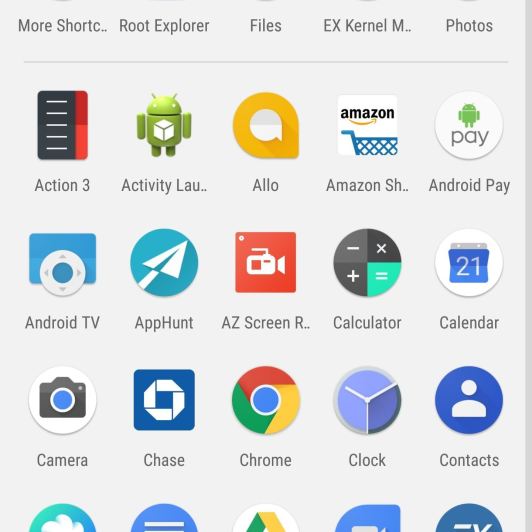Recently Google released the first Developer review of the latest iteration of Android called Android O. The new Android iteration takes along with host of new features, and improvements over its precursor – Android 7.0 Nougat. Anyone’s guess what’s the name of new Android version (Oreo gets my vote, by the way), the latest features, and all the new improvements in the latest version of the Android operating system are out there for anyone to check out. We installed the developer review of Android O on our Nexus 5X, played around with it for quite some time, and here are the 8 cool Android O features you should know:
[ad type=”square”]1. Improved Notifications
Android O carries much more control over notifications with a feature called “Notification Channels“. With this new feature, apps can group notifications into different categories, permitting users to design notification settings on a “per-category” basis, instead of the ancient method, configuring notifications for the entire application.For instance, the News app could classify notifications by the type of news you’re following, and you’ll be able to quiet notifications for specific news types, rather than having to overcome notifications from the complete application.
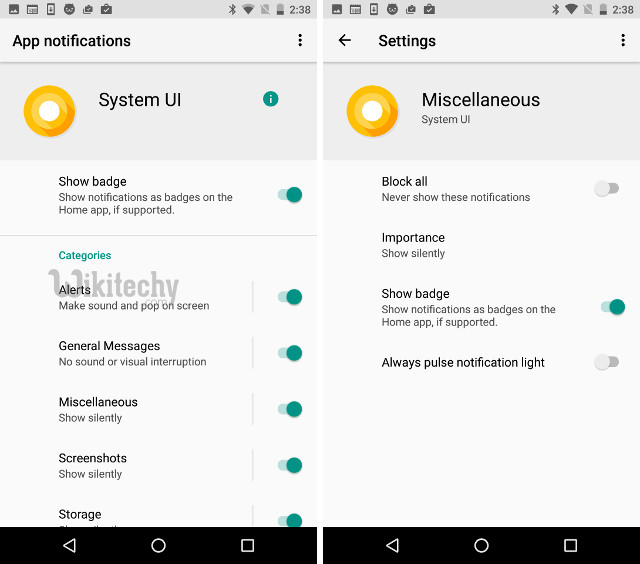
In New feature, Android O brings to the notifications, is “Snooze”.Now you can snooze notifications that you’d rather deal with at a later time. By default, notifications get snoozed for 15 minutes, but we can increase that to 1 hour. When the notification repeats, it’ll be pushed back with the same level of importance as it originally was. Also, apps can update snoozed notifications, but updating notifications will not override snooze. This means, that if you snooze a notification and it gets updated, you’ll simply see the updated notification once the snooze period ends. In feature, that’ll definitely make handling notifications a lot easier.
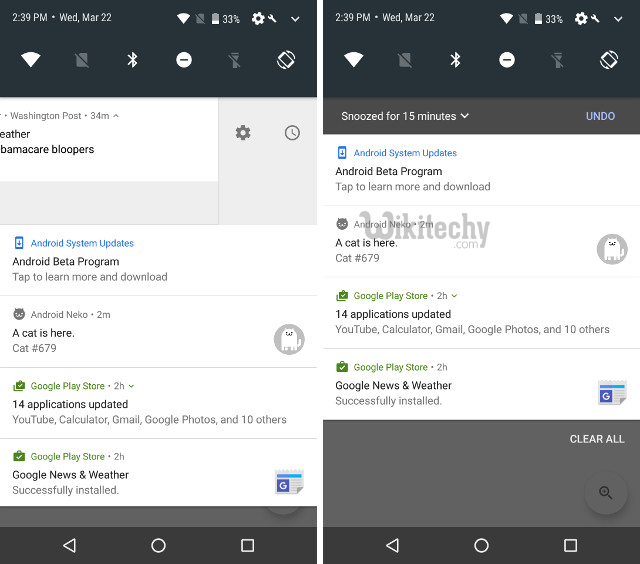
2. Picture in Picture Mode in Phones and Tablets
Android TVs started supporting Picture in Picture mode, With the release of Android Nougat. However, several developers are not jumped on the PiP wagon, and the Play Store was port with a severe lack of application that supported the feature. With Android O, Google is searching to modifiy all that, and is fetching the PiP mode to phones and tablets running Android O. This should definitely push the developers to make their application compatible with Picture in Picture mode.
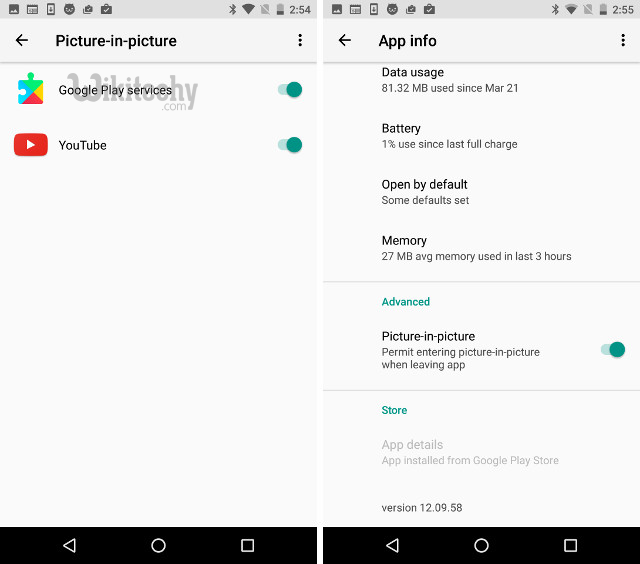
In its present state, the YouTube app seems like to support PiP(picture in picture). It even has a toggle for allowing PiP for the app. However, even with the toggle on, I couldn’t change PiP to work on the YouTube app. Definitely the feature is there, that much is obvious, but I couldn’t cross-examine Google’s rights that the PiP window will be able to have custom feature ratios, and much more. Anyway, I definitely think that PiP is a cool feature, although a innovation for most people. Whether or not it actually makes a difference to how we use our Android phones remains to be seen.
3. Battery Life Improvements
Aims of Android O is to improve the battery life of your device little bit. It does this in a excess of ways. However, a couple of twists definitely stand out. First, Android brought along the “Doze” feature in Android Marshmallow, aiming to decrease the amount of battery consumption by a device when it was sleeping. In Nougat, the Doze feature was made a little hostile in how it handled background tasks while sleeping. Now, in Android O, Google has continued making Doze even better, with a high level of restrictions placed on app activities when the phone is asleep.

Running the application on devices by Android O, will need to tolerate more aggressive background limits than in Nougat. Background limits will be executed in three major areas that cause battery drain in the background: location updates, broadcasts, background services. Background application in Android O devices, will only able to ask for the location a few times in an hour. They will also not able to register for implicit broadcasts, unless they are in the foreground. There’s a lot of technical jargon involved, but the bottom line is that Google is working even harder to extend your device’s battery life.
4. Custom Lock Screen Shortcuts
Google introduce a very useful feature in Android O – custom lock screen shortcuts – is also one that many people will know from some custom ROM. In early versions of Android, you could swipe from the left corner, or the right corner to activate shortcuts for the Camera, and the Phone; in Android O, you can use the System UI Tuner to set any two apps in those places. So, while you probably do use the Camera shortcut from the lock screen, you can change the Phone app shortcut with an app that you use more often.
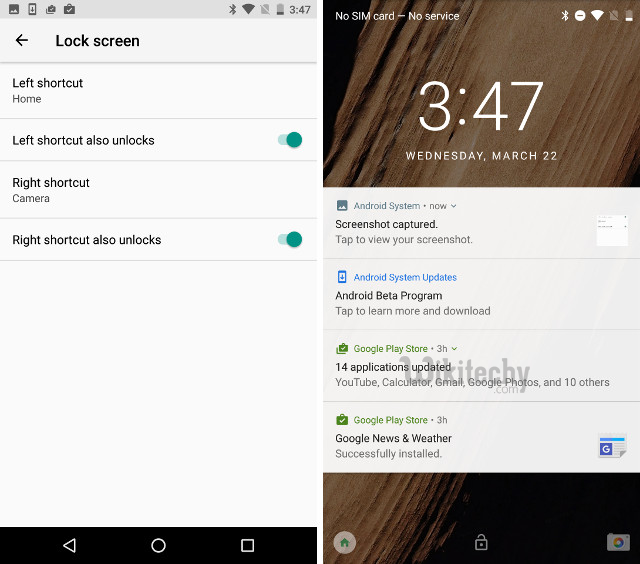
5. Settings Page Redesigned
In this settings page has been redesigned… again with Android O. It’s almost a procedural now. But jokes apart, Google has done a really good job trying to make the Settings page more organised, just the way it should’ve been. Sure, it’ll take some time to get used to the new Settings page in Android O, but it’ll certainly worth it. It’s shorter in length than the one you’d find in Nougat, thanks to all the categorization of items.

Major changes that you’ll be able to see are in the fact that things like “About Phone”, “Developer Options”, “Language and Input”, etc. are inside a broader category called “System”. There’s no slide-over menu in the Settings app, like there was in Nougat, which was actually something I liked little bit.
6. Ambient Display
With Android O, modifications have also been made to the way Android handles notifications on a device’s Ambient Display. In phones running Android Nougat, the Ambient Display displayed very detailed notifications, sometimes even displaying images on the ambient display. While this was good, because the ambient display was able to show a lot of information regarding notifications, it will affect battery life little bit. So, Android O options to show just small app icons on the ambient screen of the device, preserving a lot of battery, and keeping the display looking neat and organised.
7. Installing Apps from External Sources
Installing apps from sources other than the Play Store is an essential part of Android. As long as you allow the security setting to allow app installation from unknown sources, you could install any APK app that you want. However, once this setting had been allowed and every app could automatically begin installing on your Android device. To maintain this, Google has changed the way installation from external sources works in Android O. In Android O, you’ll have to allow installation from unknown sources, on a per-app basis.
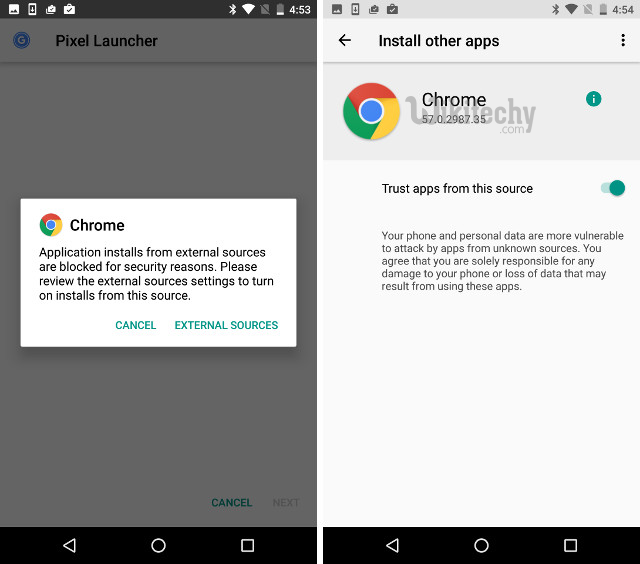
8 Cool Android O Features You Should Know
For instance, if you downloaded an application from Google Chrome, you’ll have to allow the unknown sources setting for Google Chrome. Which means, that if you download an APK app from a different browser the next time around, you’ll have to allow the setting for that browser, physically. Personally, I think that this is a good way to move towards higher security in a platform that is a open platform. There’s a long way to go and doing this physically for every different application will be a little extra work, but if it helps to keep our devices just that much more secure, then I think it’s worth it.
8. Changes to the User Interface
Android O has also brought along a excess of changes to the UI. Some of these are minor changes, and some are a little more noticeable, but for the most part, they’re all good. Some of the changes that I’ve detected and that are publicized are mentioned below.
The date and time text on the status bar has altered significantly, and with Android O, Google has chosen to go for a much cleaner, thinner font on the Status Bar. once you’ve pulled the notification shade completely down, beating on the WiFi, Bluetooth icons no longer opens the quick settings page, choosing to toggle WiFi, or Bluetooth instead. However, you can still tap on the text under the icons to open the quick settings panel. The battery indicator also always lives in the status bar in Android O, unlike in Android N, where it used to shift to the Quick Settings as soon as the notification shade was pulled down.
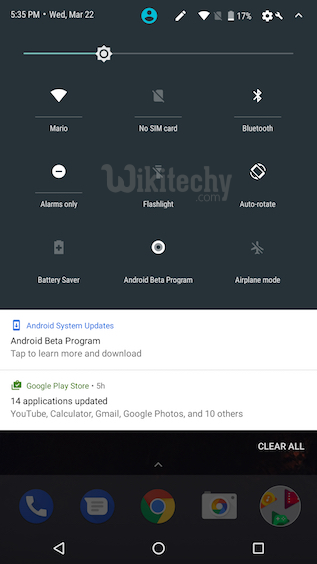
Another major modification in Android O, is that you can no longer get the battery percentage to show up inside the battery icon. Even if you allow the setting in System UI Tuner, the percentage will show up on the side of the battery icon in the status bar.
Android O also brings along Adaptive Icons, and they are basically amazing. Adaptive icons, as the name suggests, are icons that are displayed by the system in different shapes, depending on a mask carefully chosen by the device.If you’re using a theme with rounded icons, all application with adaptive icons will easily switch over to a round shape. Adaptive icons also get spacing on their sides for animations, that the system renders upon user interaction with the icons.
Like The New Android O Features?
Android O carries along quite a number of new features and changes, and while these were the major changes you should definitely know about, there are a lot of other changes, and under the cover optimizations that Android O is bringing to the table, including things like a low-latency audio API (AAudio API), enhancements lot Android’s WebView model. As always, we would like to know your thoughts on Android O, what you think it’ll be named, and your views on these Android O features. Also, if you know any other cool feature that you think deserves to be on this list, do let us know about it in the comments section below.
